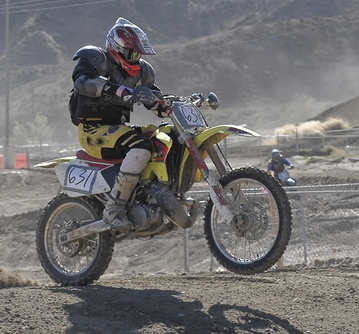
The first thing any motorcycle rider must do when attempting a new trick is overcome the mental barrier. Most riders worry more about trashing the bike than actually getting hurt, but whether you're concerned about your body work or your actual body, always start small when performing street tricks to build your confidence. Wheelies, or riding with the front tire off the ground, are the gold standard for trick riders, and mastering the complexities of speed, balance and torque takes practice.
Test your bike's capabilities. It's okay to leave the front wheel on the ground the first few times that you gear up to do a wheelie. You want to find out if your bike's toque (low-end power) is sufficient to pick the bike up without using the clutch.
Pull away from a dead stop as normal. When the clutch is released, close the throttle then open it back up quickly, but don't jerk it back. Roll it back with smooth pressure. You may not achieve a wheelie, but keep trying until you learn if your bike has the power to lift up the front wheel using just the throttle. Super sport bikes like the GSXR 750 or CBR 900 can do wheelies with minimal intervention from the rider. They are that powerful which is why inexperienced riders should tread lightly on such bikes.
Use the clutch to help you if you can't get the front wheel up using only the throttle. Accelerate to about 20 to 30 mph. Pull in the clutch lever with your left hand. You needn't pull it all the way in. Just depress the lever enough so that you are able to rev the engine higher using the throttle without the requisite rush of acceleration. This is called slipping.
Release the clutch when you've achieved a higher engine speed by slipping. Do not pop it out. Release it quickly but evenly. Again, it's not important that you succeed on the first try. The more comfortable you are with the sudden change in movement, the more comfortable you will be when you finally do get up on one wheel.
Release the throttle gradually once you get the front wheel in the air. Closing off the throttle in one sharp movement will cause the front end to come down hard and the resultant jarring could throw you off the bike. Do short wheelies this way to practice. Slip the clutch and pick the bike up. Before you get to 45 degrees, back off the throttle and put the bike down gently.
Find the throttle balance that keeps your front end up without going over on your back. If the wheel is up only slightly, more power is needed to keep it up. Trial and error will help you find the balancing point where the weight is shifted more to the rear and steady throttle will keep you going indefinitely.
Practice in a wide open area on smooth pavement. There might be a temptation to practice on dirt grass to cushion any falls, but the danger associated with weaker grip from the tires on a soft surface negates any benefit you might realize.
Practice different types of wheelies once you've got the basics down. You can do a stand up wheelie by standing on the pegs and pushing down on the front end. When the forks release (come back up) and you engage the throttle, the two actions work together to get the front wheel in the air. More advanced moves like a Can Can (a stand up wheelie when the body is positioned entirely on one peg or the other) require major skills. Test your abilities, but know your limits.